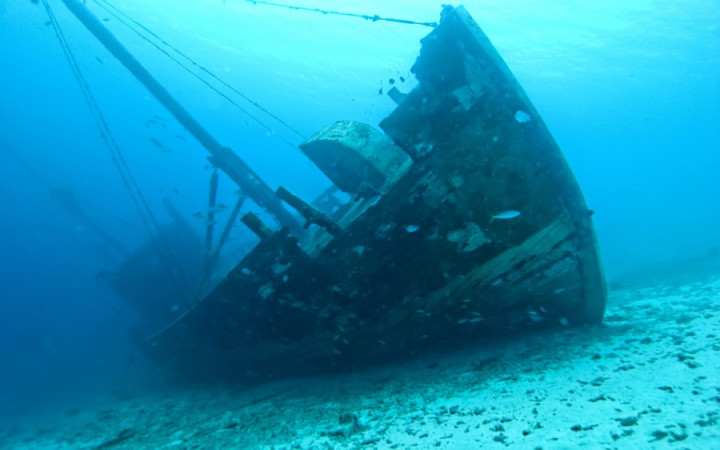Today’s Wonder of the Day was inspired by Collier. Collier Wonders, “How many ships are in the graveyard of the Atlantic” Thanks for WONDERing with us, Collier!
There’s trouble on the oceans of Wonderopolis today, matey! Our trusty vessel, the S.S. Wonder, is taking on water in some rough seas. We hope we don’t capsize!
If we can just make it to shore, we’ll find a place to ride out the storm. We love an exciting journey, but not at the risk of life and limb!
Unfortunately, many ships in the past have not found that safe port in a storm. Many succumbed to extreme weather. Others fell victim to pirate attacks. Weapons of war have also sunk their fair share.
The ocean floor is littered with the skeletons of thousands of ships. In fact, some areas have had so many shipwrecks that they’re famous for them. One such area is known as “The Graveyard of the Atlantic.”
This region starts in the Outer Banks of North Carolina. It stretches north to the southern entrance of Chesapeake Bay off the Virginia coastline. There, two forces collide to create stormy, dangerous seas. One is the Labrador Current. This is an arctic stream of icy water from the coast of Greenland. The other is the Gulf Stream, which contains warm waters from the Caribbean.
When these two forces mix, rough seas and dense fog are usually the result. Some areas in the Graveyard of the Atlantic are known for especially dangerous seas. These include Cape Hatteras, Cape Fear, and Diamond Shoals.
In addition to severe weather, these areas also have strong currents. They can cause sandbars to shift, making it hard to steer ships. Some say Blackbeard the Pirate used these factors to his advantage to avoid capture.
There is no doubt that this section of the Atlantic Ocean is extremely dangerous. The ocean floor in this area contains the relics of thousands of ships. Blackbeard’s ship, Queen Anne’s Revenge, was discovered here in 1996. Parts of the ship are on display at the North Carolina Maritime Museum.
The first recorded shipwreck in the area took place in 1526. Explorers were attracted to the mouth of the Cape Fear River because it was wild and new. It quickly became known as a dangerous spot for mariners, though. Ship after ship sank due to the deadly conditions often present in the area. Legend has it that the wild Spanish mustangs of the Outer Banks got there by swimming from sinking ships.
After many shipwrecks, the government stepped in. It built lifesaving stations every seven miles along the coast of the Outer Banks. These stations and their personnel would later become the United States Coast Guard.
Have you heard about any recent shipwrecks? They still occur. In October 2012, the HMS Bounty sank off Cape Hatteras during Hurricane Sandy. Will the Graveyard of the Atlantic continue to claim ships? Only time will tell!
Standards: C3.D2.Geo.1, C3.D2.Geo.2, CCRA.L.3, CCRA.L.6, CCRA.R.1, CCRA.R.2, CCRA.R.4, CCRA.R.10, CCRA.SL.1, CCRA.SL.2, CCRA.W.3, CCRA.L.1, CCRA.L.2




